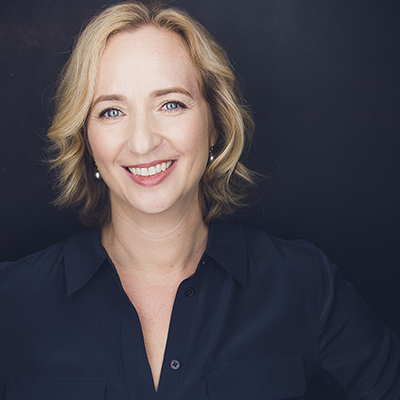
Insight
Our pensions shouldn't be used to juice the economy

The U.K. has landed on private equity as its answer to lackluster economic growth and inadequate retirement savings. Perhaps taking a page from the U.S., where retirement funds have long made significant equity investments, the U.K. is hoping that adding lots of private equity to its pension pots will drive higher returns and superior growth outcomes.
It's a terrible idea. It shows that financial regulators, government officials and those in the financial industry lobbying for these changes have lost sight of what retirement investing is supposed to be. Rumblings of opening U.S. pensions to more private equity investing have thankfully been shelved for the time being.
What is the investment objective of a pension fund? The answer seems obvious to me: a pension fund - whether a defined benefit or defined contribution plan - should provide beneficiaries with stable retirement incomes, while exposing all the stakeholders to as little risk as possible. In both cases, the objective is not the highest return, because that ignores both risk and what retirement assets are meant to provide - income in retirement.
The objective is also not to provide easy and stable capital to grow the macroeconomy, nor is it to provide a willing and reliable buyer of government debt to keep interest rates low. Having a clear investment objective is important. These are not just words in a financial report. Lacking an investment objective is like taking a journey without a destination; the odds are excellent you'll get lost. And that's exactly what's happening to pension funds today as the market turns and bond investments lose value.
American defined benefit pensions are unusual for their tolerance of risk. The plans tend to be heavily weighted toward public equities with a fair share of private equity thrown in, whereas those in the U.K. and Germany are largely focused on fixed-income assets.
Assets in defined contribution pensions both in the U.S. and U.K. (they are practically nonexistent in Germany) are mostly in publicly traded equity funds as part of target date plans that start young people off in stocks and then slowly shift the allocation till they hold 50% in fixed income securities around retirement.
The differences are to some extent explained by regulations in each country. Accounting standards for public plans in the U.S. encourage riskier investments, while Germany has caps on how much pension money can be invested in risky assets. British pensions don't face the same explicit regulatory constraints, but fixed income investment still became the norm. In the 1990s, the average pension fund was invested 75% in equity, and mostly British equity (compared to the less than 10% currently in domestic stocks). The move to bonds came from pension trustees' desire to reduce risk, or so they thought.
Pension investing is also exceptionally prone to herding behavior. You don't find many contrarians because trustees are mostly judged on how they perform relative to other funds. So, a negative return that outperforms peers or a benchmark index would be considered adequate.
In 2023, investing lots of pension money in fixed income, especially long-dated bonds, is not looking(1) good. Bond funds have lost money as interest rates rise. Meanwhile, no one knows what private equity funds are worth, but on paper their valuations remain high.
Against this backdrop, the Chancellor of the Exchequer in the U.K. recently shared his plan for defined benefit and defined contribution plans to invest significantly more money in private equity. He expects this will not only mean higher returns, but also finance economic growth. Some American politicians are making the same mistake. Truth be told, European and British defined benefit pension funds should take on more risk. Investing as much as they do in low risk, and until recently almost zero-return assets, means you need to save much more to finance pensions. More risk means higher expected returns, which translates into more money for spending today for both savers and taxpayers (who fund and often bail out defined benefit pensions).
Too much risk, of course, leaves open the prospect that the money won't be there when you need it. It is a hard balance to strike. But the answer is certainly not taking on excessive risk by loading up on the most opaque, illiquid and lightly regulated assets in the market. It makes even less sense to put this risk on individuals with defined contribution plans, where they alone bear the costs of investments gone bad.
There is an enormous middle ground here that makes more sense: increase the weighting of publicly traded equities in defined benefit plans and leave defined contribution plans alone.
First, it is not clear that the U.S. pension fund experience with private equity has been a resounding success. Many of these funds have not matured yet and, because they are illiquid, no one knows what they are really worth. Some bad surprises may be in store now that both the technology industry and commercial real estate are facing head winds. And there is evidence that pension fund investment in private equity has made the industry less successful in boosting productivity and steered the funds to worse investments.
Besides, the U.S. has outperformed Europe and the U.K. because it has long been a more innovative, flexible, growth-oriented, younger economy, not because of pension money in private equity. There's a reason European and British pensions look to North America when they do invest in listed stocks. True, changing the structure of your economy is much harder than changing your retirement investing strategy, but easier doesn't mean right. Market trends come and go, and are often corrupted by politics, but pension obligations last decades.
--- (1) Pension funds invest in long-dated bonds to duration match their liabilities and this has worked, bond portfolios are down, but so is the value of pension liabilities.
(COMMENT, BELOW)
Allison Schrager, a Bloomberg columnist, is a senior fellow at the Manhattan Institute and a contributing editor of City Journal.
Previously:
• A soft landing won't mean the economy is safe
• The 30-year mortgage is saving the U.S. economy … or is it?
• The one true secret to successful investing
• Less work, more burn-out
• When did risk become a bad word in the U.S.?
• AI-proofing your career starts in college
• Biden has to learn the same lesson as SVB
• Say it with Rubio: Changing clocks is stupid
• Sure, we'll return to the office in 2023 but not to stores
• How to manage the biggest risk of all: Uncertainty
• If you think U.S. pensions are safe, just wait
• Harry and Meghan and the perils of superstar culture
• Norman Rockwell's economy is never coming back
• Burned by crypto? Don't learn the wrong lesson
• Quiet Quitters are looking in the wrong place for meaningful work
• America's MBAs are the latest skeptics of capitalism
• Generation Z is getting a harsh lesson in stock risk
• The biggest threat to the U.S. economy is policymakers
• Buck up, boomers. You're still better off than your parents
• How to manage the biggest risk of all: uncertainty
• Startup boom is the kind of risk-taking Americans need
• Gen Z is too compliant to achieve greatness
• A bigger child tax credit isn't the poverty solution we need
• Finding your power in a higher-priced world
• The Biden administration's plans to double the tax rate on capital gains will prove costly to all Americans, not just the wealthy
• WARNING: Feel Good Now --- Pay Later: Stimulus is crammed with goodies but makes no economic sense
• The 'Stakeholder' Fallacy: Joe Biden's vision of capitalism is a recipe for failure


 Contact The Editor
Contact The Editor
 Articles By This Author
Articles By This Author